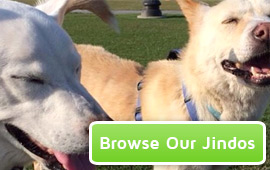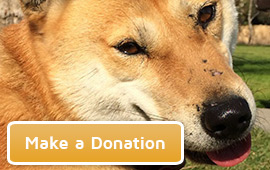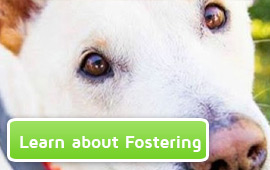(This applies to both dogs going into foster homes for the first time, as well as dogs moving into new forever homes)
Many, but not all, of the dogs that come into our Rescue will have one or more of the following common behavioral problems. Whilst we try to resolve these problems when the dogs are in their foster homes, some may still need to be worked on when the dogs move to their forever homes.
Foster parents provide an invaluable service to our dogs by working diligently with them to try and correct these behaviors, making them more adoptable.
It is certainly not unusual for a new dog going into a foster home or forever home to be quiet and aloof at first. We generally suggest you allow the dog to decompress for two weeks before making a true evaluation of the dog’s temperament.
After a few days to two weeks, new behavioral problems may arise and this is generally a sign that the dog is relaxing and letting their true personality come through.
Remember, stay calm, consistent and assertive at all times!
Housetraining (not usually a big problem with Jindos who will often housetrain themselves)
Rule out medical problems (intestinal problems, e.g.worms, bladder infections, etc.)
Supervise the dog and don’t let them out of sight (use doors, gates or a leash to keep them near you)
Confine the dog whenever they cannot be supervised (confine to a small room, or crate)
Do not harbor grudges against the dog for making mistakes in an unfamiliar surrounding
Clean up all accidents with a pet odor neturalizer and give the dog a bath if he has an accident on himself and gets dirty; dogs (and Jindos in particular) WANT to be clean
Correct the dog ONLY if you catch them in the act – it is too late otherwise
Keep the dog’s meals and trips outside on a regular schedule; Jindos appreciate structure and thrive off schedules
Reward your dog with praise when they get it right!
Watch for signs like circling, sniffing and whining, and try to respond immediately
If the dog starts to go, interrupt by saying NO or clapping, and move them outside
Marking in the house (with male dogs this can be common)
Neuter the dog
Keep the dog on a leash tethered to your waist
Interrupt the dog as he starts to lift his leg
If you cannot supervise the dog at all times, confine to a safe area or crate
Observe to see if it is in response to an outside stimulus (fear of loud noises etc) and take action so that you are not reinforcing that fear
Spray areas with a pet odor neutralizer/enzymatic cleaner
Chewing
Supervise the dog and confine when you cannot supervise
Use a bitter-tasting spray on inappropriate items, but beware that some of these sprays can leave marks/residue so test on something that is not valuable first! (These sprays can be purchased from pet supply stores)
Dogproof the home! Don’t leave valuable things laying on the floor.
Barking
Dogs may bark excessively for numerous reasons:
BOREDOM: Provide exercise and mental stimulation with toys and training exercises.
LONELINESS: Do not leave the dog outside unattended
SEPARATION ANXIETY: (see accompanying sheet) Gradually teach the dog to tolerate being alone for longer periods of time
TO GET ATTENTION: Ignore the dog and reward quiet behavior
STRESS: Refocus the dog with training commands like sit, down, paw etc. or move away from the source of stress
GUARDING: If you are unable to supervise to correct the behavior, confine the dog to a quiet area away from windows and/or doors so they won’t become overstimulated by everything going on outside. Play music in the background, or leave the TV on so that they cannot hear every little thing going on outdoors.
Jumping
Ignore the dog when they jump up and make sure that all visitors and family know to do the same; simply turn away, no kicking or shouting at the dog
Refocus the dog by training them to sit (this is an ‘incompatible’ behavior, i.e. the dog cannot do this whilst he is trying to jump and vice versa)
Always be consistent with your training!
Door-Bolting (dashing through doors)
Refocus the dog by training them to sit and wait before the door opens (start with a leash attached), and keep practising until you can open the door and the dog does not move until given permission to do so
Pulling on leash
Clicker training — Click and reward (treat) every time the dog is walking beside you with a loose leash
Be unpredictable — Abruptly change direction any time the dog stops paying attention to you.
“Be a tree” — Don’t move forward unless the leash is slack (this has never worked for me, but may work for some)
“Penalty yards” — Return to the starting line each time the leash gets tight
“Walking with a goal” — Choose a goal that your dog will find rewarding (put some chicken on the ground several feet away, or choose a favorite smelly telephone pole). The dog must keep a loose leash in order to reach the goal.
Targeting — Teach the dog to touch your hand for food rewards. He can’t pull if he is walking beside you.
Management — Use a special collar or harness for short-term management, while also continuing to work on long-term training solutions:
◦ Gentle Leader headcollar — Fits around the neck and muzzle, like a horse’s halter. Gently and effectively reduces pulling by giving you control of the dog’s head. Do not jerk the leash because you could injure the dog’s neck. Also make sure you keep the dog on a fairly short lead so that he can’t get a running start and hit the end of the lead, twisting his neck. Disadvantages: There is an adjustment period, during which most dogs will try to paw or rub the collar off. Dogs can learn to pull with this type of collar.
◦ Prong or pinch collar — Gives immediate, effective control for dogs that object to a headcollar. Some people refer to the pinch collar as “power steering.” Collar must be fitted correctly to be effective. Advantage over Gentle Leader is that there is no adjustment period. Some dogs are more sensitive to the pinching sensation than others, so use with caution and consult an experienced trainer for assistance.
◦ Front-attach harness — Makes it difficult to pull by putting the attachment point in front of the dog’s chest, thus pulling the dog off balance. There are several brands on the market. Very effective if the dog’s only issue is pulling. Not a good choice for dogs with other issues (such as lunging and barking at other dogs or people) since you have no control of the dog’s head.
◦ Flexi (retractable lead) — Most dogs enjoy the extra room to maneuver and will trot happily back and forth, rather than running to the end of the lead and continuing to pull. Please practice using your flexi before going out in public. In inexperienced hands, dogs on retractable leashes can be a nuisance or even a hazard. Read the instructions that came with your flexi and practice using the brake and retracting the lead in a quick, fluid motion.
Running away/not coming when called
• Management — Make sure the yard is secure. Keep the dog on leash when outside.
• Neutering — This can reduce the tendency of a dog to roam, but will take some time to have an effect. Don’t expect this to completely cure the problem because running away is already an established behavior.
• Practice recalls — Start with the dog very close (in the house, on leash, or in a fenced area) and reward the dog every time it comes to you. Gradually increase the distance.
• Choose a special recall cue and make sure the dog is always rewarded for responding to the cue.
• Never call the dog for something unpleasant, like getting a bath.
• Don’t call unless you are reasonably sure the dog will respond, or are in a position to enforce the command (dog is on a long line). Don’t give him the option of not coming until he is reliably responding to the cue in training sessions. Otherwise, you are just teaching the dog to ignore your recall cue.
• Don’t repeat your cue. If the dog fails to come on the first cue, go and get him.
Do lots of repetitions until the dog responds without hesitation, regardless of distance and distractions.
Aggression
Consult with a trainer for help if your dog…
• Bites or snaps
• Growls or snarls when being handled
• Guards food or toys
• Exhibits any other behavior that would make you afraid to have the dog around other people or animals



 How Long Will Training Take?
How Long Will Training Take?

